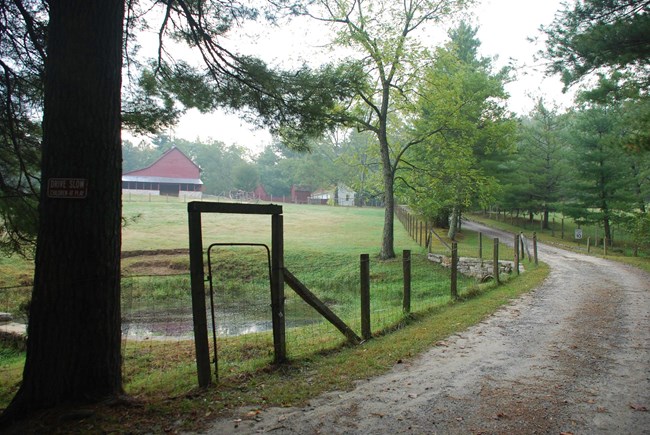Learn about NRCAs
The Natural Resource Condition Assessment (NRCA) Program provides framework, funding, and publishing support to parks to aid in the synthesis and documentation of natural resource conditions. Condition assessment reports are a tool to describe selected park resources, and record a snapshot of their current condition, identify trends, and identify potential or current threats and stressors. Understanding the condition and trend of natural resources is key for parks and NPS planners to appropriately prioritize and allocate stewardship resources.

NPS Photo
The Carl Sandburg Home preserves and protects over 300,000 objects that help to tell the endless stories of how he lived and how his life and works have helped shape this nation.
Traditional NRCA Report: 2017
A Natural Resource Condition Assessment was published in 2017. For a park of its size, the site has an amazing diversity of ecological communities. Located in the southwestern corner of North Carolina, the area contains forests and woodlands, rock outcrops and cove forests, fields and ponds. Though only 108 ha (267 acres), the site is home to at least 519 species of vascular plants and fourteen different ecological communities. In partnership with Western Carolina University, site staff selected nine natural resource topics to include in the study:
- Air quality |
||
- Soil and geologic resources |
||
- Invasive species |
||
- Infestations and disease |
||
- Focal species and communities |
||
- At-risk biota |
||
- Landscape dynamics |
||
- Viewscape |
Natural resource conditions at the Carl Sandburg Home National Historic Site varied. The site faces a number of resource related issues, many of which are related to surrounding population growth and land use. This study identified three areas where management and monitoring will be particularly important to achieve its mission of conserving the site’s natural resources. Recognizing that there is some overlap between them, these include: 1) protecting and restoring unique vegetative communities found on the property, 2) monitoring and managing the impacts of non-native plants, insects, and diseases, and 3) monitoring the effects of acidic deposition on soils, water quality, terrestrial communities, and aquatic communities.
For other reports and natural resource datasets visit the NPS Data Store.
Source: NPS DataStore Collection 7765 (results presented are a subset). To search for additional information, visit the NPS DataStore.
Last updated: June 24, 2022
